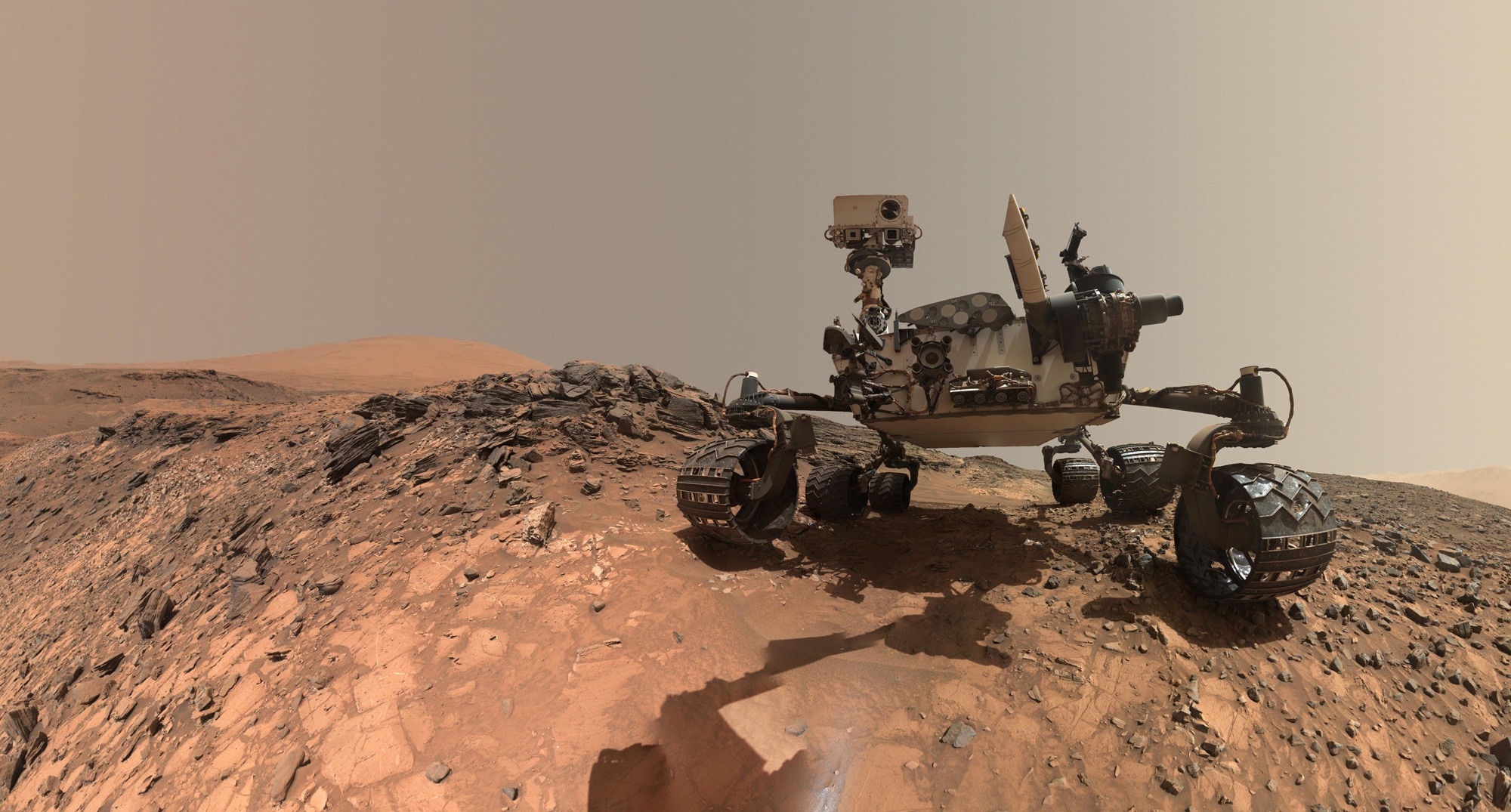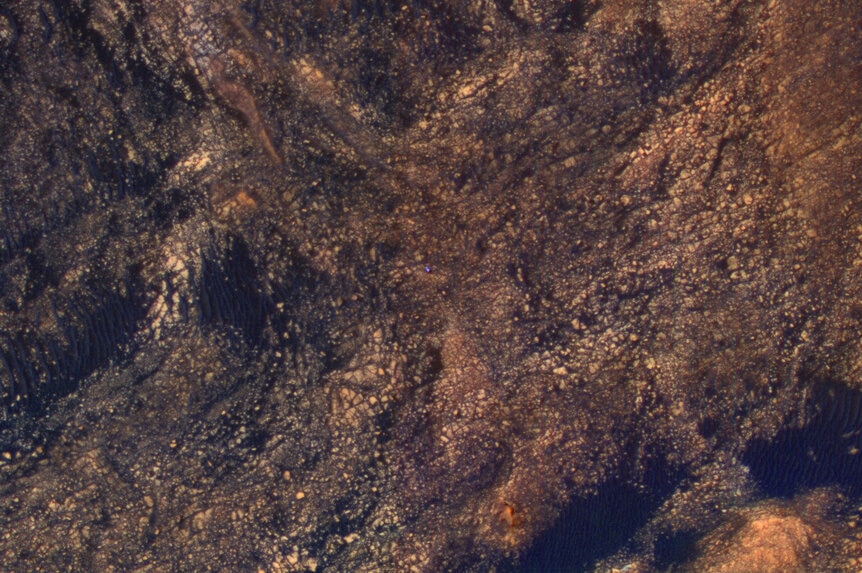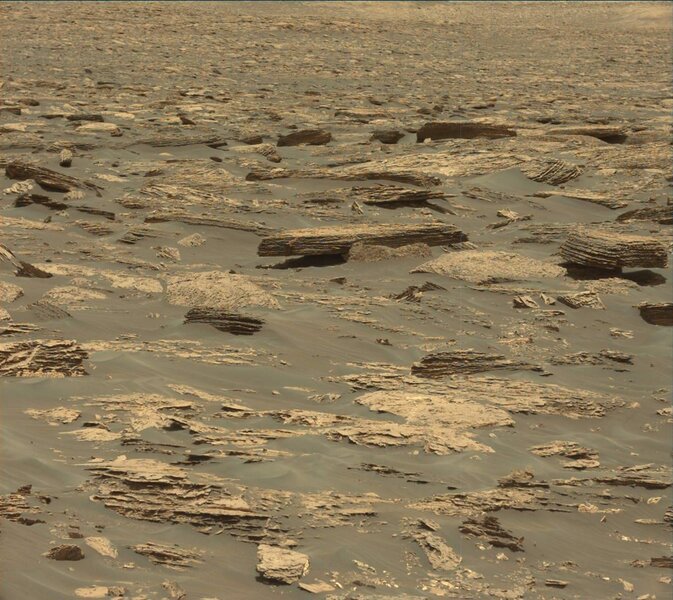Create a free profile to get unlimited access to exclusive videos, sweepstakes, and more!
Reflections on a remote, dusty, Martian ridge: Mars Curiosity rover seen from orbit

Mars is smaller than Earth. It’s only half as wide, with less than a third of the surface area of our fair blue-green world. That makes it seem downright diminutive.
But don’t be fooled. It has 145 million square kilometers of surface area, a vast stretch of real estate that makes it incredibly easy to get lost in.
And that is why I do so love images like this: The Curiosity rover crawling over the surface of Mars, as seen from orbit:
That stunning shot was taken by the HiRISE camera on board the Mars Reconnaissance Orbiter, and in this color-enhanced image, the rover shows as a bright blue dot (right in the center) standing out against the red rocks and dust of Aeolis Mons, a mountain colloquially known as Mt. Sharp.
MRO was 271 km (170 miles) above the rover when it took that image, and it can resolve objects down to about 80 centimeters (a little over 2.5 feet) across. Curiosity is about 3 meters long, so it shows up as a barely resolved feature.
Curiosity landed on Mars on August 5, 2012, inside Gale crater. It immediately started investigating its surroundings, and over the past five years has been going up the northwestern flank of Aeolis Mons, the central peak that formed after a monstrous impact carved out the crater billions of year ago. The crater is over 150 km across, and Aeolis Mons stands over five kilometers high.
When the image from HiRISE was taken, Curiosity was on its way up the mountain to “Vera Rubin” ridge, where hematite was found using mineral mappers from orbit. Hematite can form in standing water, so the rover is investigating the area to look for other signs of the ancient lake known to have once existed surrounding the mountain (the crater is well over 3 billion years old, and sometime after it formed it filled with water, now long since gone). Vera Rubin, by the way, was an astronomer who pioneered the search for dark matter, the mysterious substance making up the vast majority of all matter in the Universe, but which is invisible to our telescopes.
After more than 1720 sols on Mars —a day on Mars is about 24.5 hours, so planetary scientists call them “sols” to distinguish them from Earth days— we’ve gotten used to images from Curiosity’s point of view. Like this one, for example, showing what Curiosity saw the day the image from orbit was taken:
Though still to my eye beautiful, sometimes exquisitely so, these images show Mars to be dry, dusty, forbidding. The barrenness is complete. There are no humans on Mars, no life at all that we know of; as a popular meme put it, Mars is the only known planet to be inhabited solely by robots.
Seeing those pictures from the surface is awe-inspiring, but they show how lonely it is there. Somehow, for me, it’s the images from orbit that drive that home for me. I’m used to seeing satellite images of Earth, and it seems that no matter where you look you see the influence of life. You have to go out of your way to find a spot with no life, no vegetation, nothing to see but rock and sand.
Yet, on Mars, that’s everywhere. That’s all you get.
... unless you happen to spot the handiwork of humans, a gleaming robot explorer traversing that barren but glorious geology sitting on a planet tens of million of kilometers away at its closest.
Look at it! It is the end product of cooperation around the globe, an aggregate of the knowledge we share with each other, from every scientist, every engineer, every person who has looked up at the stars and wondered about them. No one in the history of our species has lived there, but we go there by proxy partially in the hope that we need not make our last stand on Earth.
It’s testament to our drive to explore, to understand, a “we are here!” shouted to the cosmos. It is a vivid blue dot, illuminated by sunlight, a small player in a vast arena, but one that we know better every day because we choose to explore.




























